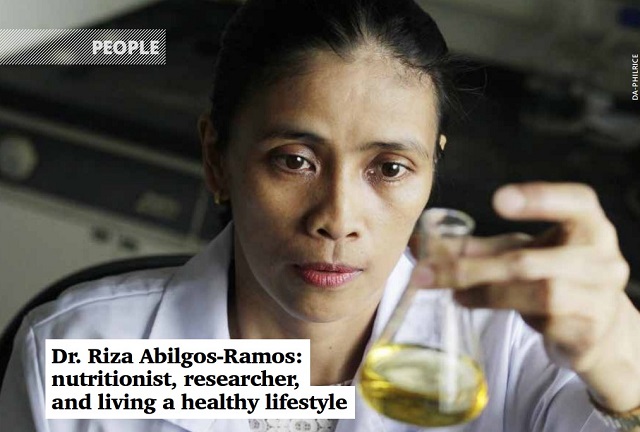
We eat, work, and pray every day. Why not add exercise in between? Dr. “Reeze”, our recently conferred Scientist I, shares her journey as a nutritionist and her insights on work–life balance.
Becoming a nutritionist
During her childhood in Camarines Norte, Doc Reeze was skinny and very sickly. She was among those who lined up for their school’s feeding program for underweight pupils.
It was partly the reason she decided to take BS Nutrition at UP Los Baños. “I was amazed with the importance of nutrition in our lives; hence, I became interested on how our body processes anything that we eat,” she said.
She was fascinated as to how diseases can be prevented or cured through healthy diet and lifestyle. She wanted to become a surgeon but financial difficulties stood in the way.
Nutrition research in the UK and PH
In 2006, Doc Reeze started her PhD at the University of Nottingham in the United Kingdom under the Ford Foundation International Fellowship Program. Her research on the folate content of rice showed that overexpression of rice folylpolyglutamate synthetase genes enhances folate concentration in the rice grain. Folate, one of the B vitamins for normal growth and development and very important to prevent underdevelopment of the spine in the first three months of life, is also needed for rice seed development.
“I continued my research here in the Philippines with our traditional varieties, which are proven to have high folate content. A major challenge, however, is finding a plant breeder who also focuses on rice nutrition to serve as my collaborator,” she shared.
She was part of the team of researchers behind MS 13 or IR68144, a high-iron rice, which was released as a special variety for farmers under the auspices of the Rice Biofortification project of the HarvestPlus Program. It was funded by the International Food Policy Research Institute.
Doc Reeze, through her research works, has developed complementary food and beverage from rice and locally available, nutrient-dense, and low-cost crops designed for malnourished older infants, pre-school and school children, teenagers, and pregnant and lactating women.
She initiated the development of the buffalo-milk ice cream bar enriched with vegetables and colored rice, which is being manufactured and sold since 2019 by Nueva Ecija’s Dairy Box of Catalanacan Multi-purpose Cooperative, and of the brown rice-ice cream sandwich adopted by NutriDense Corporation.
She developed the Macarse rice brew being sold by the Rice Business Innovations System (RiceBIS) Zaragoza in Nueva Ecija and has recently gained the One Town, One Product label from the Department of Trade and Industry. Women farmers were capacitated in producing and marketing these rice-based products for additional income. She also led the study on the acceptability and nutritional quality of malunggay-supplemented rice crackers and salt bread with chili pepper leaves.
Health at home
Doc Reeze is not your typical scientist! She is good in basketball and volleyball, loves sports, dancing, and other highly physical activities. She enjoys outdoor adventures such as rappelling and hiking.
On her diet, she prefers dishes with chilli and coconut milk as they are also good for metabolism—and the fact that she’s proud of her Bicolano roots!
“Healthy diet always starts at home. For my family, I usually cook nutritious dishes. I love to experiment on food and I sometimes share my discoveries to my research staff,” she said.
Pinoy rice diet
Given that Filipinos are heavy rice eaters, she recommends eating brown rice. Doc Reeze explained that it has more protein, fiber, vitamins and minerals, and antioxidants, which are mostly removed from milled or polished rice. Fiber, she emphasized, helps in weight maintenance and digestive health.
“Rice nutrition content is obviously not a research priority for now as we are more focused on increasing yield. My wish is that in the next 5-10 years, we’ll give more importance on rice nutrition research,” she hoped.
With the carbohydrate-rich diet of most Filipinos, which is unhealthy according to Doc Reeze, she pushes for further enhancement of micronutrient content in rice such as iron, folate, and zinc to lessen micronutrient deficiency in the country.




